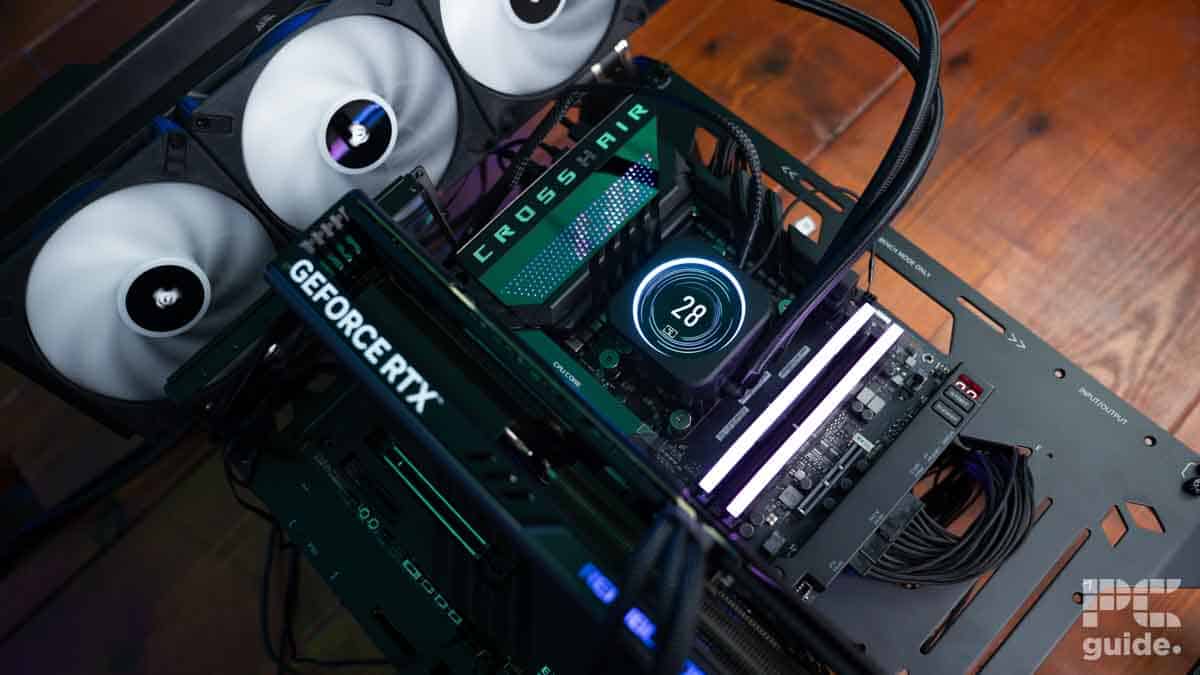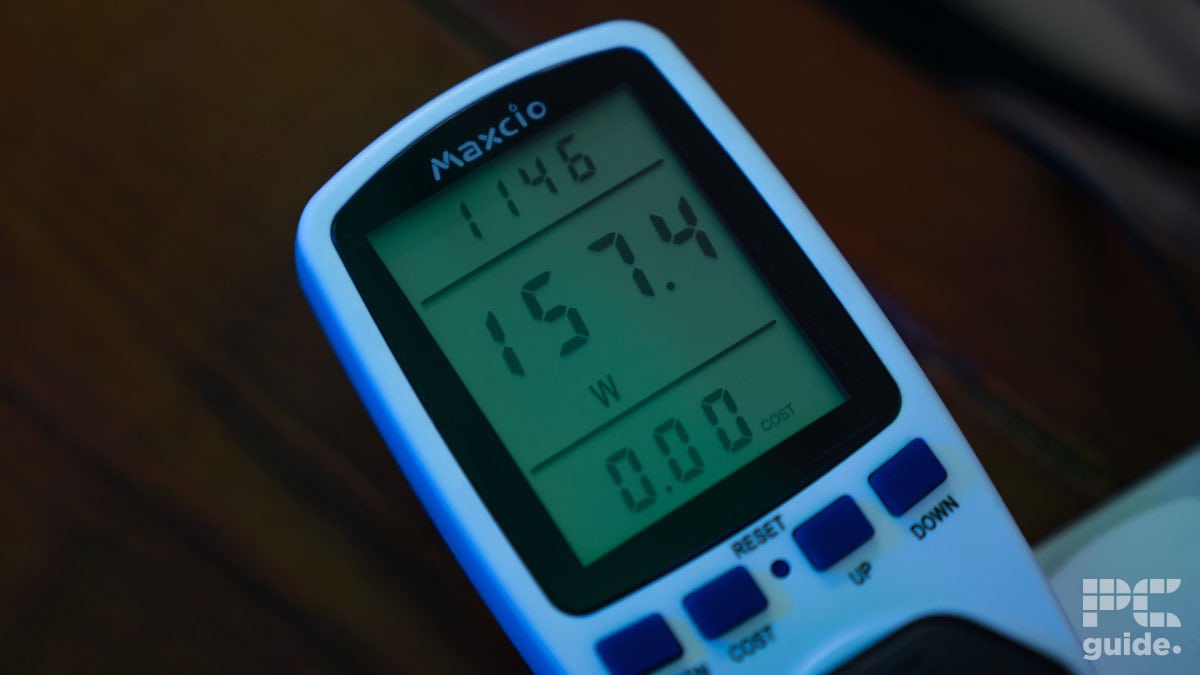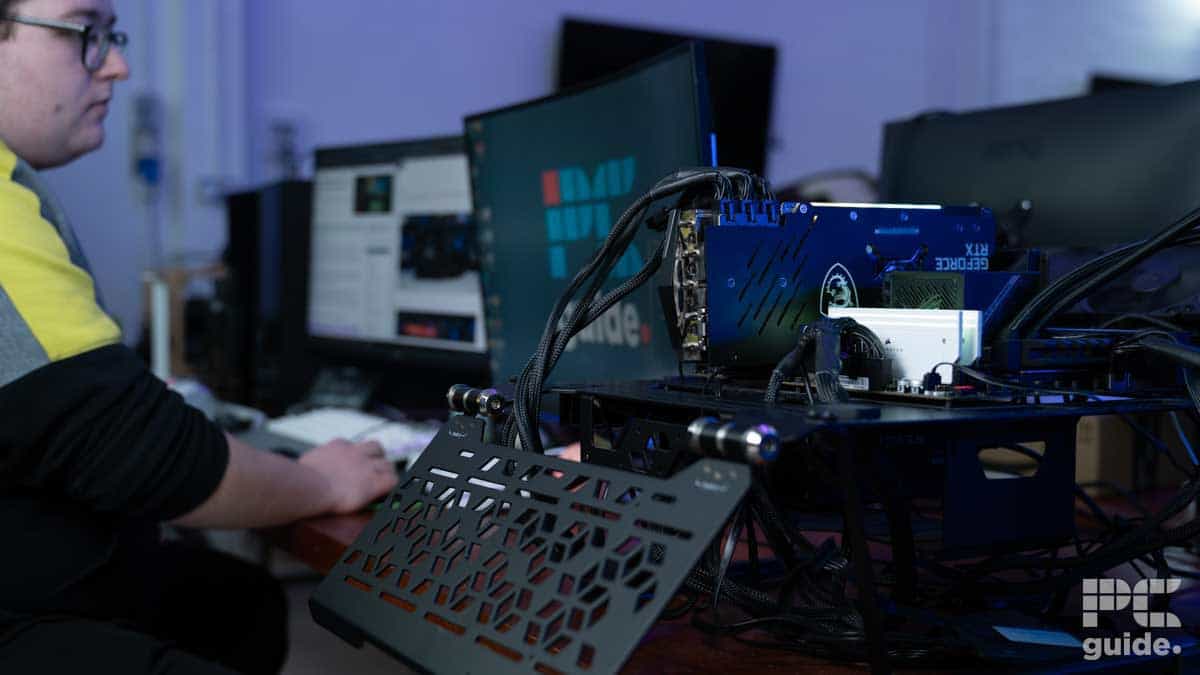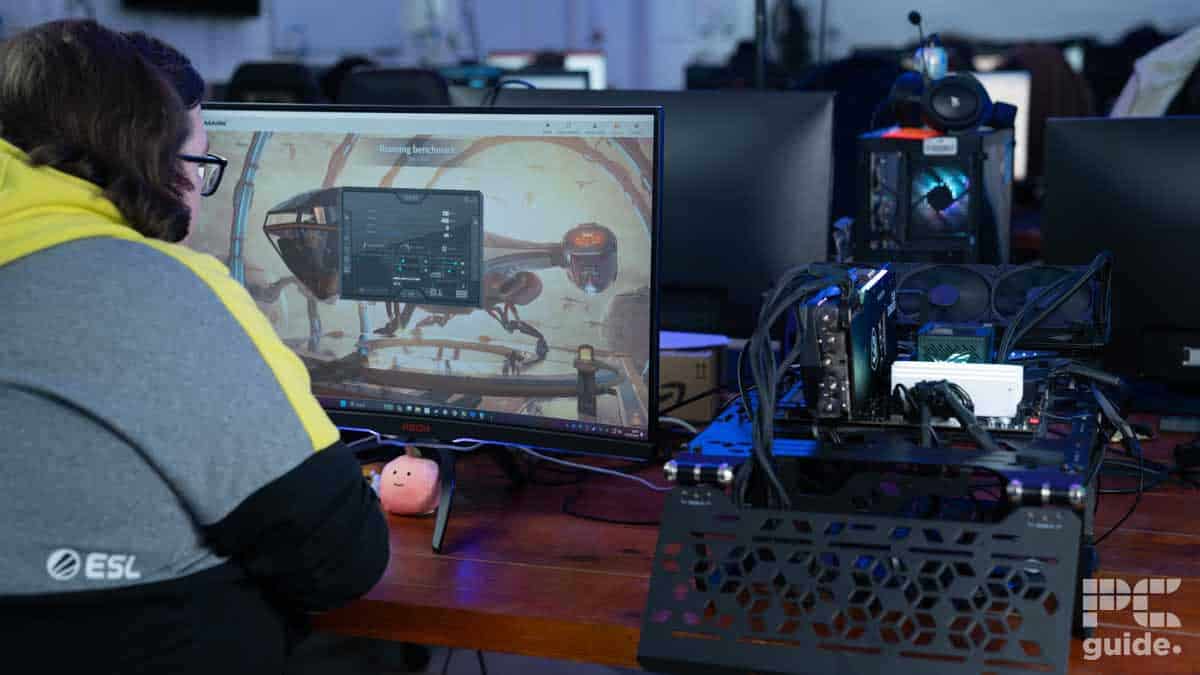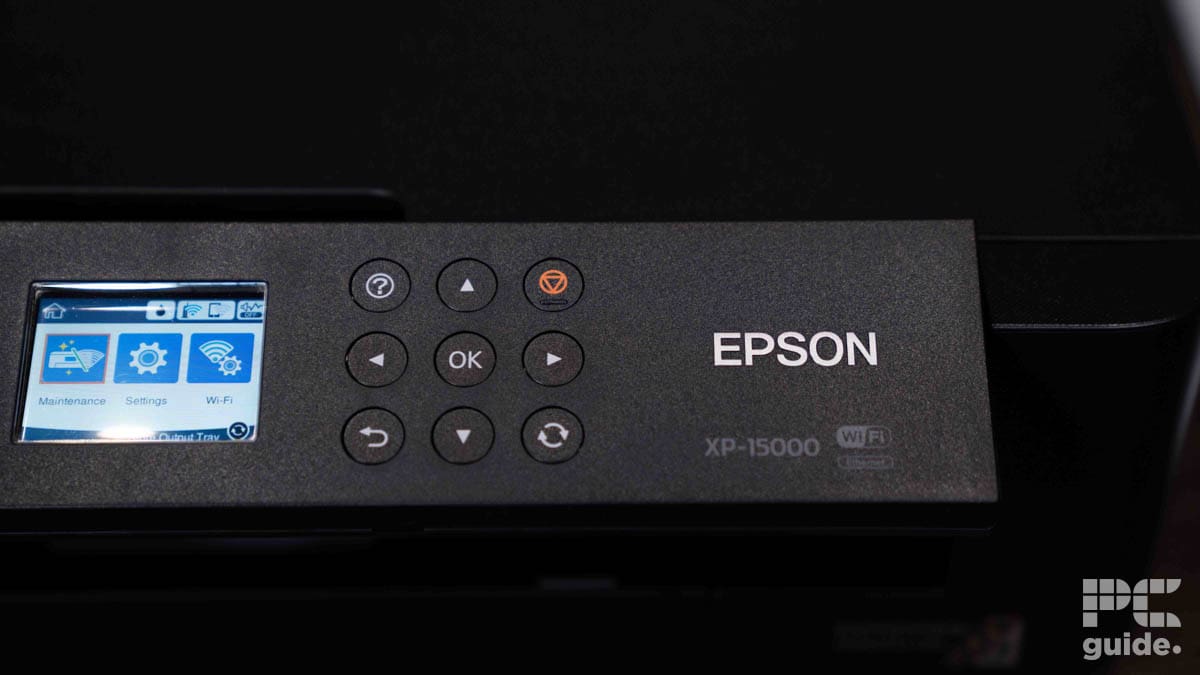PC Guide Testing Lab

Table of Contents
Our PC Guide Testing Lab enables us to ensure we give careful, detailed, attention to new products and components. It is at the center of all of our hands-on reviews and tests. Reliability and repeatability of benchmarks are key to testing any product, so our standardized setups ensure our testing environment is kept as uniform as possible to deliver clear and useful results across product areas.
PC Guide Testing Lab – ethos
We have built our testing setups to deliver balanced and useful performance insights – using the same core elements unless a change is needed for specific testing. For example, in the case of CPU testing, we would need to use an Intel partner motherboard for testing an Intel CPU. However, in all testing across product areas, we ensure uniformity to deliver fair, balanced, and ultimately useful results that allow us to produce helpful buying guides and reviews. And, crucially, that enables you to make the best possible buying decision. Our testing utilizes:
- Repeatable, standardized processes
- Recognized synthetic and real-world benchmarks
- Product and market expertise
- A controlled Testing Lab environment

CPU and GPU testing
We use separate CPU and GPU test setups to minimize system changes across our testing environments. This allows us to keep both set-ups as standard as we can while swapping only the required parts. It also means that we can test CPUs and GPUs alongside each other on dedicated rigs. For ease of access to components, and easier audio level and temperature testing, our CPU and GPU set-ups are each built into the open-air Cooler Master Master Frame.
CPU testing
Our standard CPU test system is built using the below components. We’ve included our go-to AM4 (DDR4) and AM5 (DDR5) RAM, alongside motherboards for AM4, AM5, and Intel LGA 1700 platforms. Testing is carried out by our resident CPU expert, Jack Howarth.


CPU test setup
| Component Type | Component |
|---|---|
| Graphics card | RTX 4070Ti Super |
| CPU cooler | Corsair Elite LCD 360mm |
| Testing frame | Cooler Master Master Frame |
| Power Supply | Asus ROG Thor 1000W |
| RAM (DDR4 for AM4) | Netac Shadow DDR4 (3600MHz – 18-22-22-42) |
| RAM (DDR5) | Corsair Vengeance DDR5 (6400MHz – 32-40-40-84) |
| Motherboard (AMD AM4) | Gigabyte X570 Aorus Pro |
| Motherboard (AMD AM5) | Asus ROG Crosshair Extreme X670 |
| Motherboard (for Intel Raptor Lake) | Maximus hero Z790 |
CPU Cooler testing

This setup consists of basically the same components that we use to test CPUs, only everything is constant bar the cooler. We use an Intel setup for this, as Intel CPUs tend to run a little hotter than their AMD counterparts. The components on the CPU cooler testing bench are as follows:
CPU cooler test setup:
| Component | Name |
| GPU | RTX 4070 Ti |
| Motherboard | 64GB Dominator titanium @6400MHz |
| Memory | ASUS ROG Maximus Extreme Z790 |
| CPU cooler | Corsair Elite LCD Capellix 360MM |
| Power supply | Cooler Master MWE v2 1050w |
You can view the full process of how we test CPU coolers here. We use all the latest components, specifically the CPUs to give the coolers we test a ‘worse case scenario’ challenge. This is well noted in the CPU cooler testing page and all the reviews we conduct.
Motherboard testing
Motherboard testing is a fairly in-depth process that requires a lot of knowledge of how PCs work. These components are brimming with features and they essentially serve as the base that ties all of your other components together. Without the motherboard, your components wouldn’t be able to communicate.

This benchmark setup varies depending on the motherboard we are testing, sometimes we will need to swap out three components to make the test bench work (CPU, RAM, and Motherboard) so the test bench can sometimes differ quite wildly from the rest of the setups we use.
We aim to test things like efficiency and CPU performance when we test motherboards, all the while looking at the best features that the motherboard possesses, we do this by running the CPU through 5 synthetic benchmarks while it is on a specific motherboard. What this does is give us a crude efficiency value, and a performance value that we can use to stack motherboards against each other.
If you need a more comprehensive explanation of our motherboard testing methodology, you can visit our How we test motherboards page.
GPU testing
This system is built around the AMD AM5 platform. You can also read more about how we test GPUs. Our GPU benchmarking is carried out by Sebastian Kozlowski, with a full range of GPU synthetic and real-world gaming benchmarks applied to any card that we fit into the system.


GPU test setup
Our standardized GPU test system is built using the following components.
| Component Type | Component |
|---|---|
| CPU | Ryzen 9 7950X CPU |
| CPU cooler | ROG Ryujin II 360 AIO CPU cooler |
| Testing frame | Cooler Master Master Frame |
| Power Supply | Phanteks 1000W PSU |
| RAM (DDR5) | Corsair Dominator Titanium 64GB 6600 |
| Motherboard (AMD AM5) | ROG X670E Hero motherboard |

The above test setups are specific to the testing of CPUs and GPUs. Periodically we assess titles that we use in our real-world gaming tests; we may add or remove titles to produce more useful and relevant results to offer more depth and insight into performance expectations.
Router testing
At PC Guide we know reliable and capable routers are critical to home and office networks, and device connectivity. Our lab testing considers router key aspects including, physical, features, and capabilities before analyzing performance across key repeatable tests. Our tests aim to provide the most useful information about performance and reliability for you, through:
- WiFi speed, strength and range testing
- File transfer testing
- Setup assessment
- Full feature analysis
- Full device specs breakdown
- Value and market positioning
Printer testing

Our printer labs are also designed to reflect real-world needs across a range of use cases and day-to-day functionality – including printing, and copying (where applicable). Throughout our structured testing, we look at everything from physical design and construction to performance, compatible media type, economy, and value. Our in-depth printer reviews include specific tests featuring:
- Print and scan tests (mono and color)
- MacBeth Color Checker test with Nix QC accuracy testing
- Copier testing
- Economy (cost per print, ink use, wastage)
- Display, build quality and features analysis
To understand our wider approach to testing, reviews, and hands-on coverage of products and components, read more about how we select, test and review on PC Guide.


